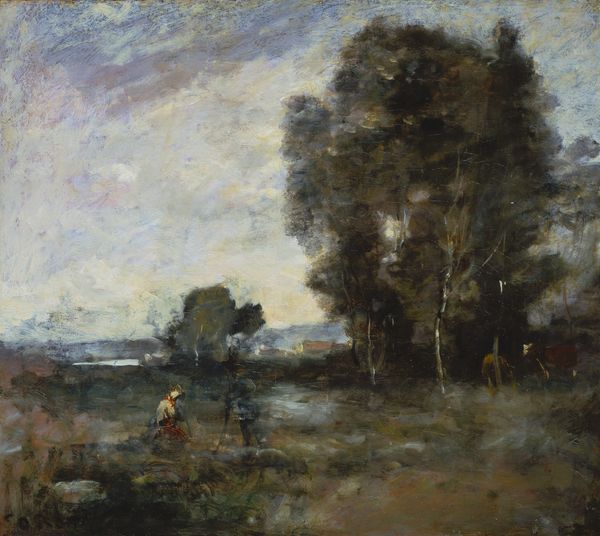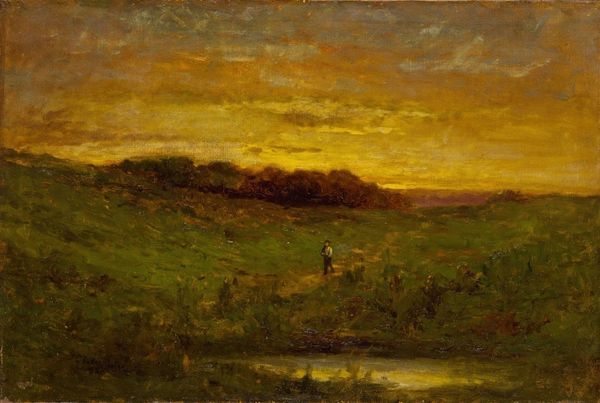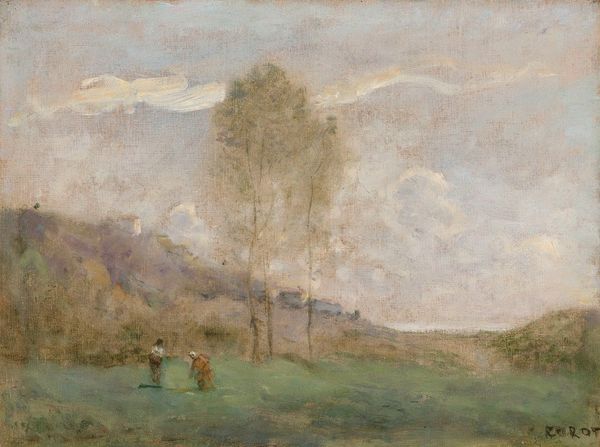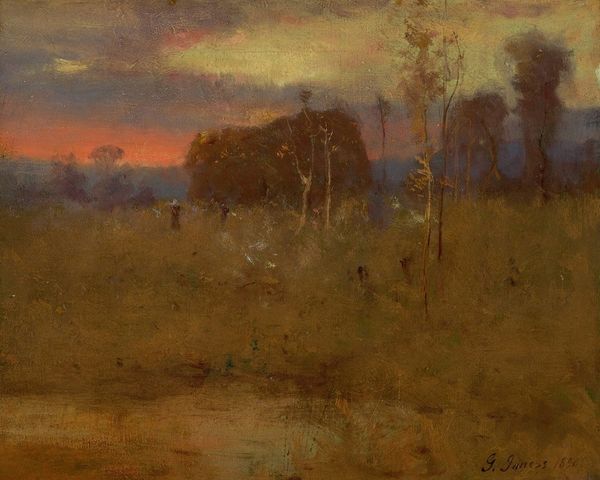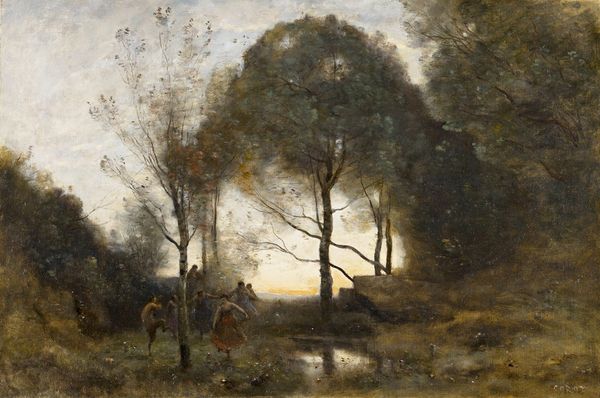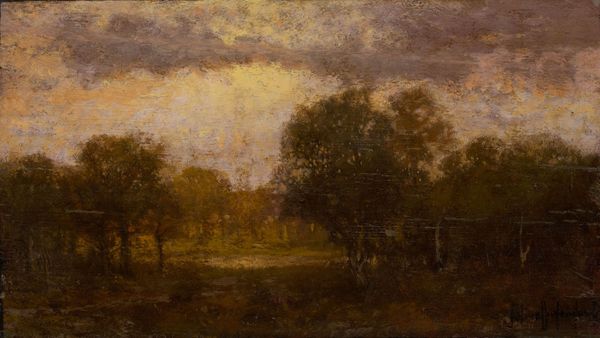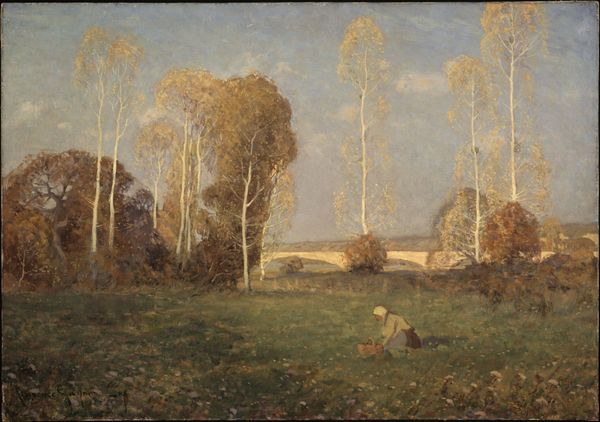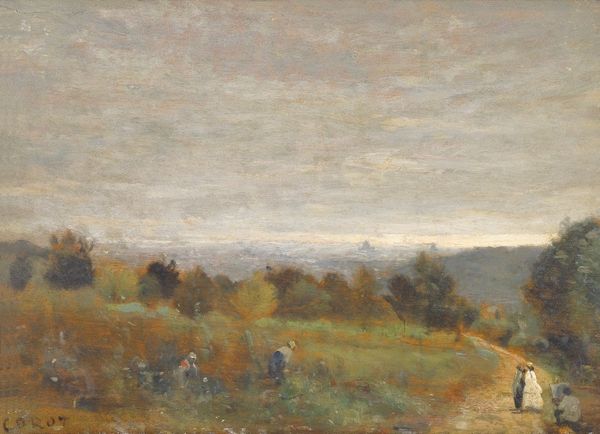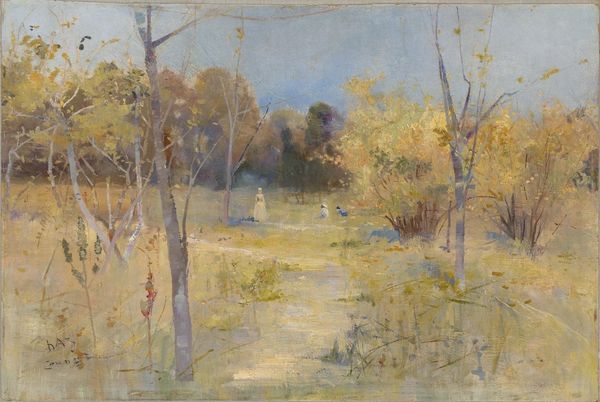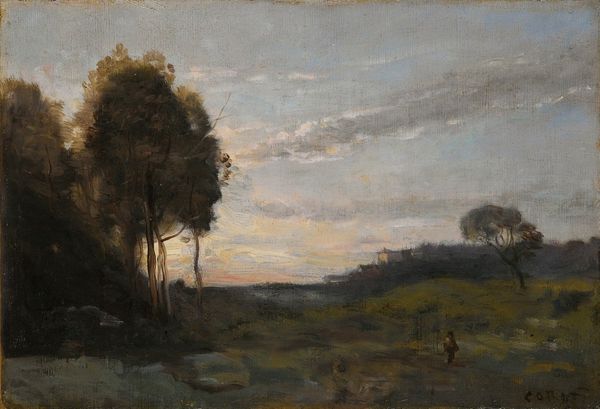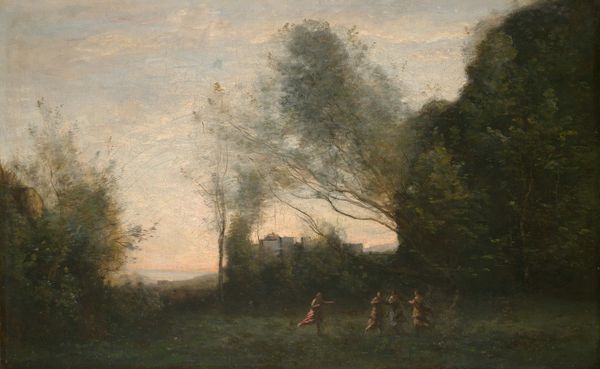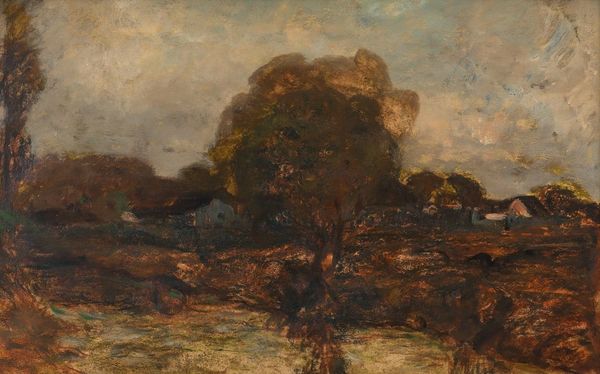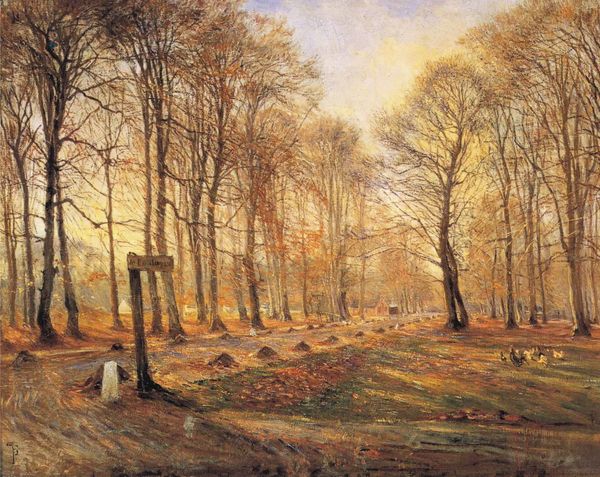
Copyright: Public Domain: Artvee
Editor: So, this is George Inness's "The Mill Stream, Montclair, New Jersey" from around 1888. It's an oil painting, and it strikes me as quite tranquil. There's a softness to the light and a dreamlike quality to the scene. What do you see in this piece? Curator: I see a layered narrative. Inness often juxtaposed the romantic ideals of nature with the encroaching realities of industrialization. Note the smokestacks rising in the distance, symbols of progress but also potential environmental degradation. How do you think the presence of the figure alters the scene's message? Editor: Hmm, she seems almost oblivious, lost in her own world. Is she meant to represent something specific, like an allegory? Curator: Perhaps not an allegory in the traditional sense, but more a symbol of humanity's relationship to this changing landscape. Her quiet presence could be interpreted as acceptance, a reconciliation of nature and industry, or even ignorance. The artist, throughout his career, struggled with modernity. Think about who benefitted and who suffered from the late 19th century industrial expansion, and how this could be related to race and gender in American history. What feelings does it evoke in you when considering that socio-economic reality? Editor: It makes me consider who had the luxury of "acceptance" versus those directly impacted by the pollution and labor exploitation of that time. So the painting is idyllic on the surface, but really hints at much deeper issues. Curator: Precisely! Inness captures a moment of deceptive serenity. It encourages us to question what's gained and what's lost as society transforms, and from whose perspective we're viewing that transformation. Editor: I didn't see that at first. I was only appreciating the colors and the brushwork. Thanks, now I have a lot more to think about.
Comments
No comments
Be the first to comment and join the conversation on the ultimate creative platform.
